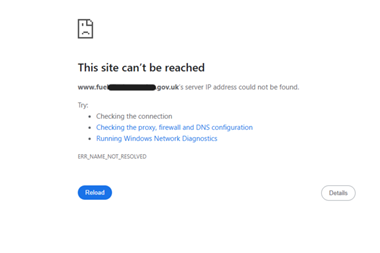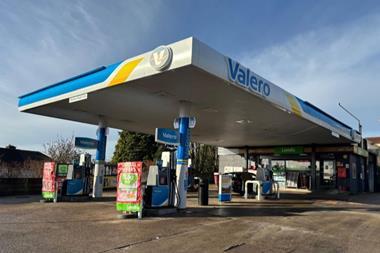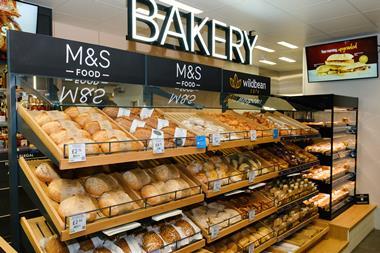Despite an increased emphasis on the shop side of the forecourt business, wetstock control remains central to effective site management. Although it can be a headache for many retailers, mis-managing wetstock means that not only can profits disappear into thin air but you risk breaching the terms of your Petroleum Licence. Moreover, being anything less than stringent with the storage of fuel could cause danger to staff and customers and lead to fines, clean-up costs and even closure.
Over the past few years there have been many technological advances in wetstock management, including: accessing ‘real time’ data from remote locations, the introduction of interactive services via the internet, and mobile technology, which means features such as alarms can be directed to site operators wherever they are.
However, while the purpose of such technology is to make life easier for the fuel retailer, at first glance it can seem daunting and complex, meaning some retailers shy away from today’s wetstock management technology and plod on with traditional methods.
However, most operators offer flexible packages – allowing the retailer to give over as much, or as little control, as he likes. This means you can start off with a taste of technology – perhaps a helping hand interpreting your dip readings – and add to it as required. At the other extreme, you can hand over total control of wetstock management to a third party, leaving you to concentrate on other parts of the business.
Nick Payne, director at Mercury Petroleum Systems (MPS), says that one conflict site managers face is that as sites get older it becomes increasingly difficult for them to manage wetstock themselves, as deteriorating equipment increases the chances of wetstock loss and associated problems.
He says: “I believe the UK is an environmental time bomb waiting to go off. Most of the underground storage tanks are more than 25 years old, along with old pipework sitting in many types of ground problems. Couple this to an ageing non-calibrated gauge network and delivered by old pumps on the forecourt that are regularly over-issuing – what chance has the operator, with the demands to make his shop sell more just to compensate for the losses of fuel?”
Payne says that in such cases handing over wetstock control to a third party can offer site operators peace of mind and help pull back profits that can literally be leaking out of the business.
Barry Jenner, sales director at Cameron Forecourt, agrees that fuel retailers – dealers in particular – are still struggling with antiquated wetstock systems that in turn make the business less efficient.
He says: “Many independent sites do not benefit from the modern technologies enjoyed by many front-line sites. While wetstock management techniques are of primary importance to all fuel installations it is the older sties that often require assistance to introduce cost-efficient and effective means of control.”
Jenner believes the seeming complexity of the technology on offer can be a barrier to many dealers improving wetstock control: “With the introduction of modern technology, wetstock management has seemingly become very complex and to those who do not have a clear understanding of computer technology, something of a nightmare. This is why at Cameron Forecourt we have been working with our customers to remove the mystery and return to the basic question ‘is there a leak or not?’”
He adds that many sites still use a dipstick to check tank levels, even though moving from manual dips to an electronic gauge offers all sorts of advantages: “While the introduction of Vapour Recovery Stage 1B prompted many sites to install new electronic tank gauging systems, there are still a large number of sites not equipped with this type of equipment.
“Recently, Cameron has been working with Dresser Wayne to introduce the TIG5000 tank contents gauge, designed to provide a flexible solution to electronic tank gauging – not only does it collect data from tanks, polling deliveries and metered sales, but it also produces reconciliation reports.”
Don Murray, technical services manager at Cameron, says reconciliation is a must if a full picture of wetstock is to be gained and losses minimised.
He says: “Wetstock management doesn’t stop with tank gauging – stock losses can often be accounted for; sometimes it is simply down to calculation errors and other times it might be as a result of a mis-calibrated pump. Losses don’t always indicate that there is a leak.”
RECONCILIATION
Brian Reed, sales and marketing manager at Fairbanks Environmental, agrees that the important factor when it comes to wetstock control is reconciliation of the data in order to determine the cause of apparent wetstock loss.
To get the most from reconciliation it is important to have daily readings. Says Reed: “It has long been established that there is a need to reconcile wetstock records on a daily basis. On its own a daily wetstock variance figure does not give the site operator an awful lot of information. If the variances swing so wildly from one day to the next is there any point in calculating them at all?” he asks. “The answer of course is a resounding yes, but it is what is done with the information that is the important piece in the jigsaw. The simple process of extending the reconciliation period from one day to one month allows site operators to begin to notice trends. One month’s figures may be higher than the previous month’s, or this year’s figure may be different from the same time last year. This is trend analysis at its most basic form.”
Reed says that while such elementary trend analysis should protect retailers’ margins from the threats of pilferage, meter over-measure and undetected leaks, the retailer’s greatest tool is statistical inventory reconciliation (SIR), which is used to analyse the trends within the wetstock reconciliation data – “not just for the tanks on an individual site, but by grouping together several hundred tanks which have the same characteristics – supply source, throughput, geographical location and much more.” Jenner points out that this is where retailers often want to call the experts in.
“The point at which you might be excused for thinking that you had completed your wetstock reconciliation, be it on a piece of paper, a spreadsheet, a back-office PC package or a reconciling tank gauge, is the point where Fairbanks will start the analysis,” he says.
“By feeding your data into their system at their offices Fairbanks will be able to compare retailers’ losses with an established profile for each tank on your site.”
Reed says that this approach offers the all-important peace of mind to
the retailer: “Unfortunately there is no miracle cure for wetstock loss
(not even standard temperature accounting), but Fairbanks’ two-fold message is straightforward: firstly there are certain causes of wetstock loss that you can do something about and certain causes that are beyond your control. Deal with the things that you can influence. This will get you to a position where at least you know that your losses are no higher than they could be.
“The second point is that once Fairbanks has established the normal profile for each of your tanks any deviation from that norm will quickly be identified and they will work with you to investigate and put right the causes of the extra losses. This will give you the reassurance that should the worst happen, and you experience a tank or line leak it will not go undetected for a long period leaving you with a remediation bill that could spell the end of your business.”
He adds: “By putting their faith in Fairbanks’ system, organisations such as ChevronTexaco, Tesco, BP/Safeway Partnership, in addition to many independent dealers and dealer groups, have recognised that it is no longer acceptable either environmentally or financially to ‘manage the risk’ of allowing a leak to go undetected. They understand the need to protect their assets, their profits and their reputations.”
FLEXIBILITY
Veeder-Root also offers a flexible wetstock management service, designed to help even the most technophobic site get wetstock under control. Its Fuel Management Service (FMS) solution is divided into risk management and leak detection; logistics support, and unaccounted fuel loss analysis and the company says it is suitable for all retail sites – from those that have neither a computer nor tank gauge to those that have Veeder-Root’s or other manufacturers’ gauges and the latest computer equipment.
A Veeder-Root spokesperson says: “Our fuel management services can support retailers’ own fuel manage-ment efforts in virtually any capacity they need – from providing reliable timely data collection and real time alarm notification, to managing the leak detection program or supporting their dispatch management.”
Again, a central part of Veeder-Root’s FMS system is risk management through statistical inventory reconciliation. “If the analysis process reveals a problem, specialist loss analysts will investigate and advise on the action to take,” says a Veeder-Root spokesperson, adding that such action can only benefit the retailer: “Losses attributable to over-dispensing meters, delivery shortfalls, temperature variation and fraud can be considerable. By nature, such losses are intrinsically difficult to identify and eliminate. The better you are at it the more competitive you will be.”
AUTOMATIC POLLING
Meanwhile, Nick Payne, director at Mercury Petroleum Systems (MPS) believes the automatic data polling built into the company’s system is a leap forward in wetstock control.
He explains: “Keeping control of your fuel in your underground storage tanks should be easy, but the problem is always the same – getting people to send the right information at the right time. MPS has sorted this problem with companies like Fuelforce and Sainsbury’s by gathering the data automatically.
“The data is polled every two hours – dip readings, pump sales, and temperature change when deliveries have taken place – we even get the ticketed delivery invoice details by touch-tone phone from sites. This is then reconciled against the gauge dip delivery reading – if the site operator does not give this vital piece of information they get an email to say they have not performed their duty as required by their licence.”
Mercury believes that this regular access to real-time data improves wetstock control no end. Says Payne: “We spot leaks and over-issue quickly as we have the data and the trends of the site looked at daily, not monthly. We treat temperature as a key issue – each delivery temperature change is logged into a database giving us more vital clues to poor results on nearly every UK forecourt.”
He adds: “By doing what we do, the operator can put the fuel to the back of his mind knowing that this part of his job will be covered by experts and will most importantly protect the environment, keep his business going and will put ‘profit back into petrol’ with proper control.”
Payne also points out that with this system, the Petroleum Officer is often happy to reduce the need to keep paperwork at the head office.
Sainsbury’s says that using Mercury’s wetstock control system has reduced stock loss at its sites and, to date, eliminated leaks.
IT and technical manager Paul Densham, says: “We noticed that once the first six months’ trends were established Mercury could proactively reduce stock losses. It has got rid of the human error side of manual reconciliation and the problems associated with that.
“Since piloting Mercury in October ‘01, we have now replaced manual reconciliation at site level with central control through Mercury at all our sites.”
Sainsbury’s got over any potential barriers to the new technology by introducing the system slowly. Densham explains: “For a while we ran the Mercury system in parallel to manual reconciliation until the site operators felt comfortable with the technology and the system. Finally, we stopped manual reconciliation on the sites earlier this year.”
He adds: “Another key factor as far as we are concerned is that in collecting data you can understand the whole business much better and use the data for all sorts of purposes. For example, we can calculate and monitor fuel availability at all sites – historically we wouldn’t have been able to do that. This means, for example, that the hauliers can double-check on the delivery day and see instantly which sites have the lowest stocks and therefore prioritise them – it has improved efficiency. The data has also minimised the risk of a leak going undetected, giving us peace of mind.”
Elsewhere, Steve Jones, financial controller at Fuelforce has been working with Mercury for 15 months and has also reported encouraging results. Jones says: “When we first took over the Fuelforce network there were no automatic gauges or links between the back office and tanks so the system has made a great difference.
“Month on month we are seeing a reduction in wetstock losses and identifying where problems are. We have found so far that the investment in the cost of systems and ongoing wetstock control is being covered by the savings made.”
Jones adds that the remote data polling feature definitely has its advantages: “Historically when you rely on people to give you data there is a delay in receiving that for various reasons but now data is fed to them directly from the gauge giving real time information rather than data that is two or three days out of date. And it’s not just end-of-the-day data as has been historical. The advantage of automatic polling is that Mercury is not so reliant on the site operators – and for us it’s a way of keeping a check on the accuracy of the site operators’ reports. It also gives us peace of mind over not losing product – after all, you don’t need much product loss to erode margins.”
Jones says the data polling has also prompted the company to look at introducing the technology into other parts of the business. He says: “This way of operating is very much the only way to go for modern sites. Capturing the data has been great and we are now looking at implementing similar technology for managing our dry stock.”
He adds: “What we like about Mercury is the innovative approach. For example we are currently looking at using SMS technology to enable the site operator to check stock levels in the tank via his mobile phone. And a similar system that would enable the delivery driver to record deliveries using mobile phones.”



























No comments yet